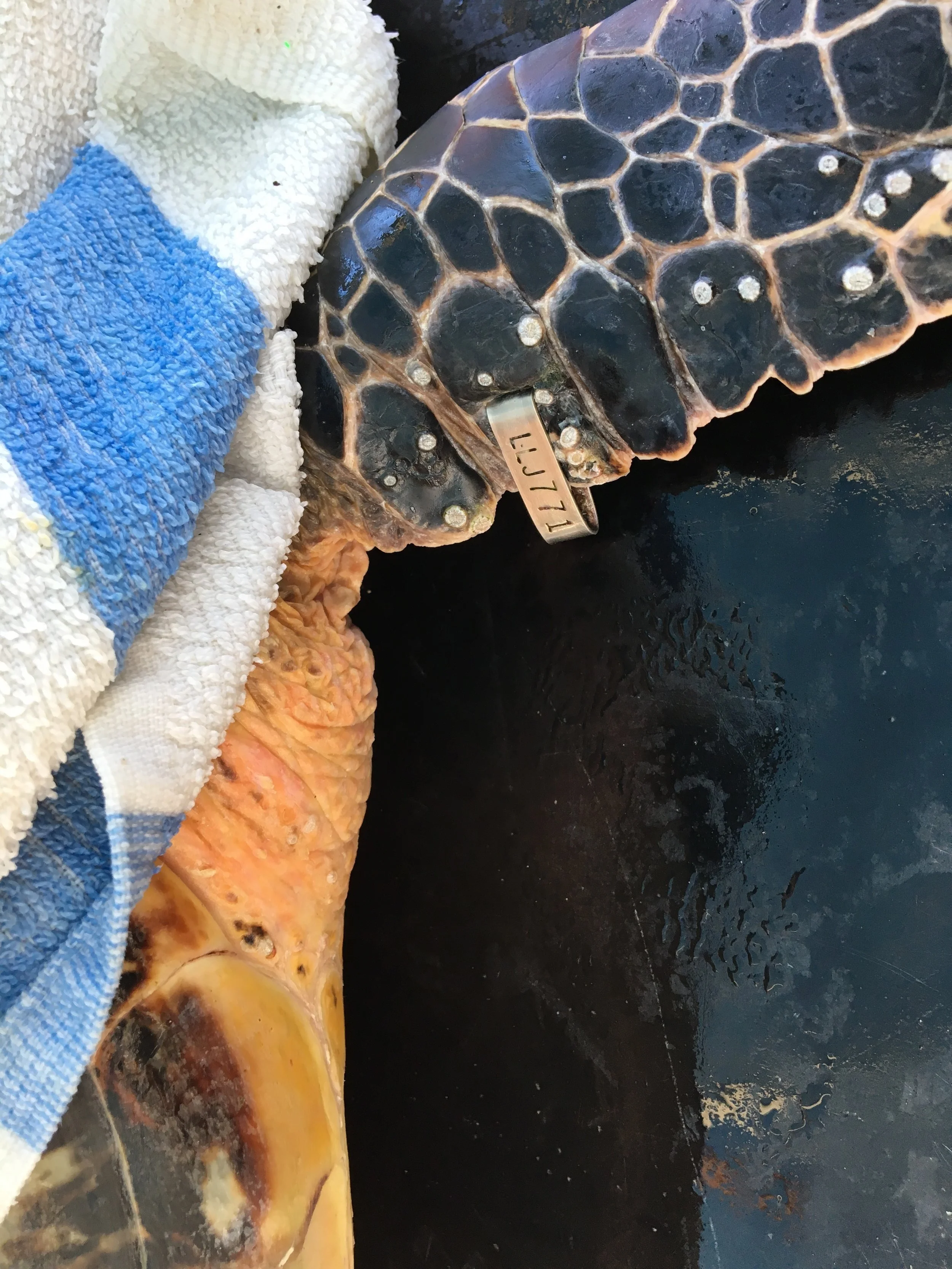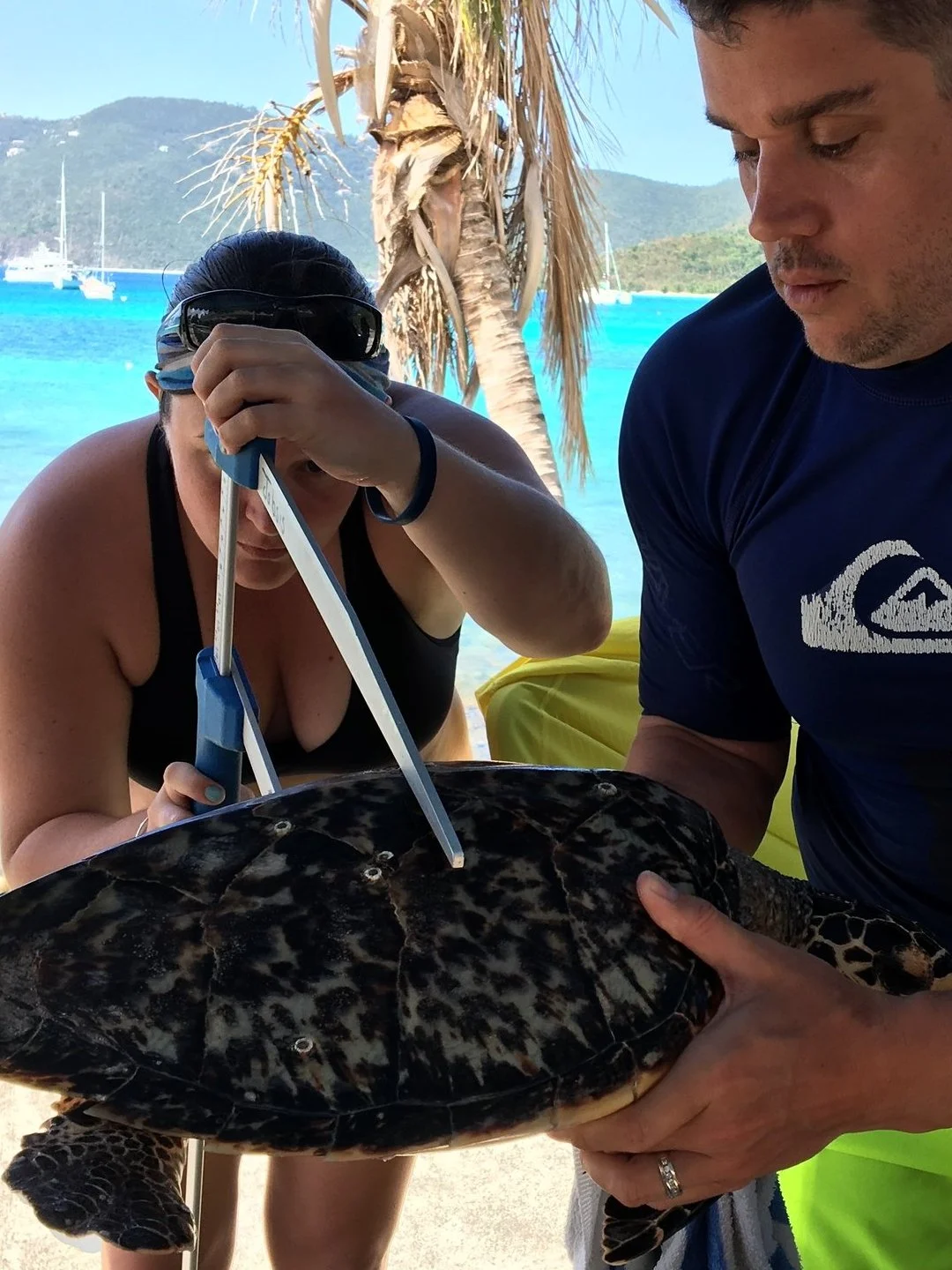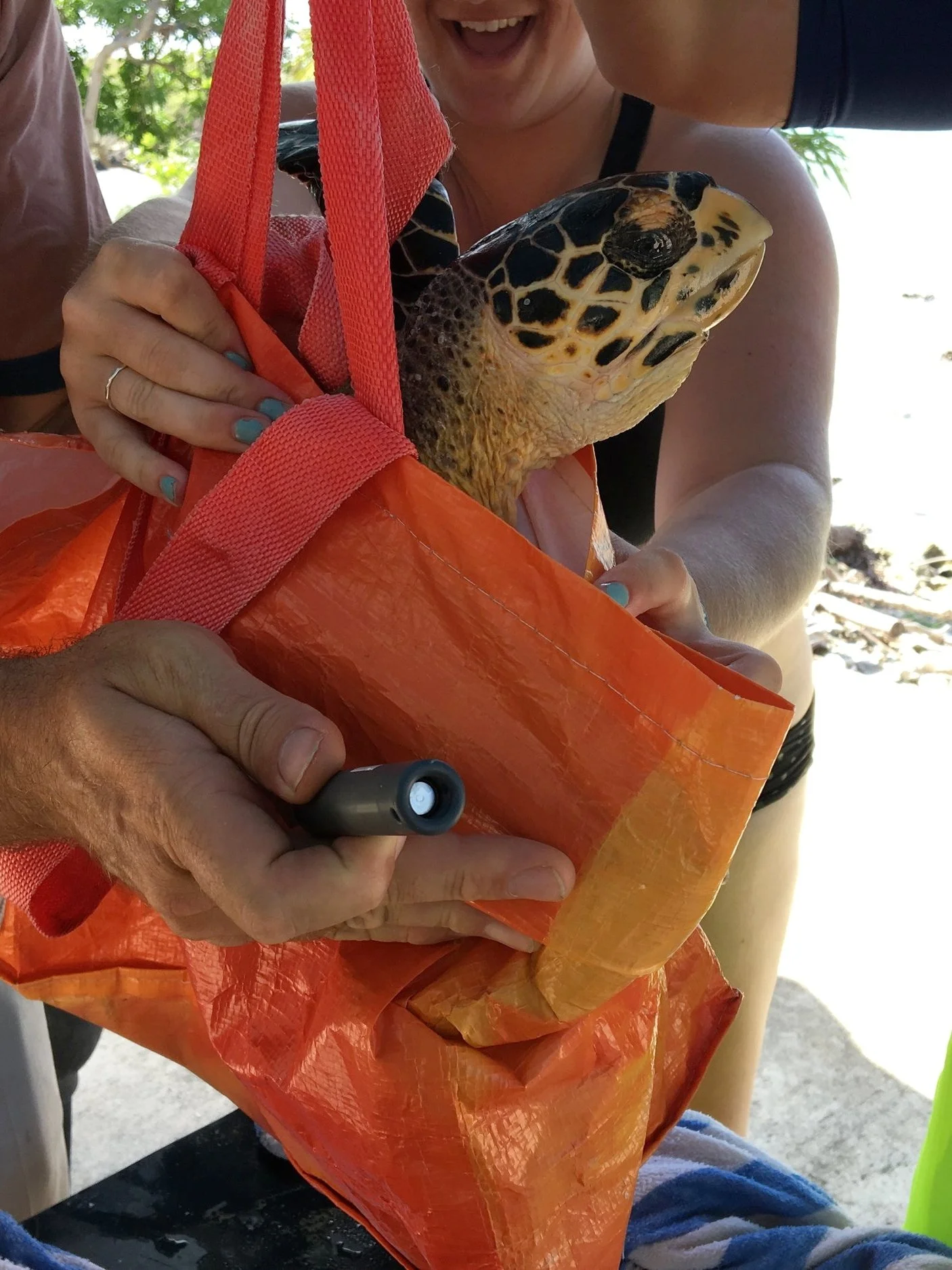Are Endangered Sea Turtles Among Victims of Hurricanes Irma & Maria?
A hawksbill sea turtle swims along the Cyril E. King Airport runway. They seem to be taken with with many crevices and hiding places the pilings create.
endangered species were also impacted by hurricanes irma and maria
Since Hurricanes Irma and Maria swept through the Caribbean in September 2017, marine researchers at the University of the Virgin Islands noticed a dramatic decrease in the number of green sea turtles (Chelonia mydas) in Brewers Bay, St. Thomas, and, a possible decrease in hawksbill sea turtles (Eretmochelys imbricata) as well. Both of these species are protected as their populations have been greatly impacted by over-harvesting of eggs and adults over the past centuries. Protected by the Endangered Species Act since 1972, green and hawksbill turtles are listed on the IUCN Red List of Endangered and Threatened Species. The presence of juvenile green and hawksbill turtles in Brewers Bay has been a welcome sight and evidence of their recovery after years of conservation.
For the past 10 years, Dr. Paul Jobsis, Director of the Center for Marine & Environmental Studies and Associate Professor of Biology at the University of the Virgin Islands, and his students, have been recording the abundance of these endangered sea turtles in Brewers Bay. Since receiving their National Marine Fisheries Service permit three years ago, over 100 turtles have been tagged and released in the bay and the research has shown that both the juvenile hawksbill and green sea turtles choose to live in Brewers Bay for years as they mature. Swimming surveys before the Hurricanes often recorded sightings of 10-15 green turtles during a half kilometer (~500 yards) swim. Following Hurricanes Irma and Maria, the visibility and water quality was so poor, no surveys were conducted for nearly a month. Once the waters cleared sufficiently Dr. Jobsis, along with MMES graduate Scott Eanes and MMES student John Cassell investigated. These first surveys confirmed their worst fears, no turtles, and no seagrass beds. Where did the turtles go? Were they okay? Did they survive these fierce storms?
For the green sea turtles, the answer seemed obvious; the large seagrass meadows in the shallow waters of the bay were gone, swept away by the storm. While much of the beach itself was covered by the ripped up seagrass, no deceased turtles were found on the beach. It appears that the turtles left the bay and have not returned due to lack of food.
For the hawksbill sea turtles however, the answer was not so clear. Their food source, sponges, was reduced in quantity but still present. Decreased visibility in the bay following the storms may have simply reduced the ability to see these well-camouflaged turtles. Fortunately, the acoustic tracking research undertaken by MMES graduate (2016) Scott Eanes and MMES student Lora Johansen (graduation 2018) has shown us the answer.
acoustic tracking
Their project used acoustic tracking of hawksbill sea turtles to monitor their habits and movement. Small transmitters attached to the turtle’s carapace sends out "pings" to receivers that have been installed throughout the bay. When a tagged sea turtle (or any of the other marine animals tagged by UVI researchers) swims by, the date, time and the animal's unique ID number is recorded. This technology, funded by VI-EPSCoR, has led to important new insights on these endangered species, answering questions that were only previously hypothesized.
When the acoustic receivers were recovered following the storms they told an interesting story. The hawksbill turtles left the bay for only two days during and after hurricane Irma, and all but one of the tagged turtles returned. They were just hard to find due to the decreased water clarity.
Captured turtles are outfitted with an ID number. Scientists record the location and date of capture along with other data.
This young hawksbill's weight and measurements are recorded.
Grocery shopping bags are used to help suspend and weigh these ungainly creatures.
An acoustic transmitter is attached to the carapace. It will continue to transmit data about its activities for about one year. This information will be recorded on acoustic receivers installed within Brewers Bay.
So will the juvenile green turtles return? If history is an example then yes, for in 2010 a smaller storm, Hurricane Earl, removed much of the seagrass in Brewers Bay. A study by Dr. Jobsis’ student Sam Mitchell showed that the seagrass and subsequently, the sea turtles, returned gradually over four to five years. So most likely, if the native seagrass returns, the juvenile green sea turtles will once again use Brewers Bay as a foraging ground. This is important because these animals, once on the brink of extinction, are now starting to recover. We must protect the foraging areas, such as Brewers Bay, that these slow growing juveniles are using.
Finally, it should be noted here that it is illegal to capture or harass any sea turtles in the Territory. This research is undertaken only by express permission of National Marine Fisheries Service. The permit is very specific as to how the turtles can be handled and what data may be collected, but it is research like this that can determine what is needed to ensure the recovery of these species.
Dr. Paul Jobsis, (front row left) is pictured here with his MMES students engaged in the preservation of this endangered species.
We wish to recognize the Baird family for their generous donations toward hawksbill conservation, and, the UVI Sea Turtle Research and Conservation Fund which helps make the acoustic tagging efforts possible.







